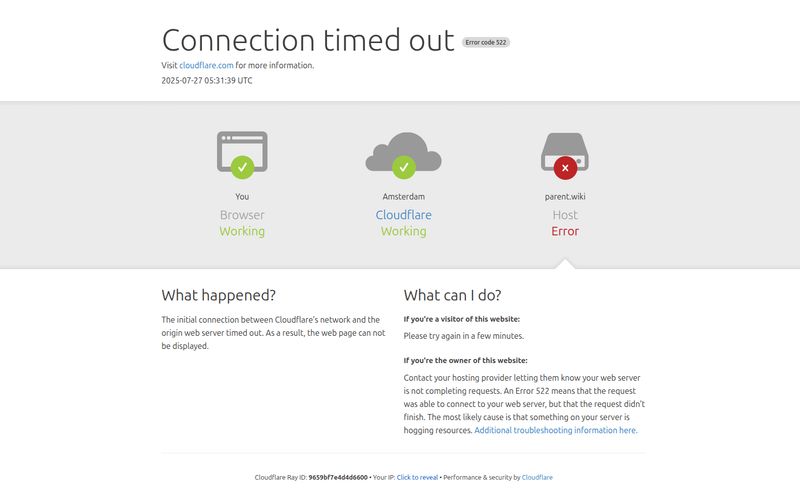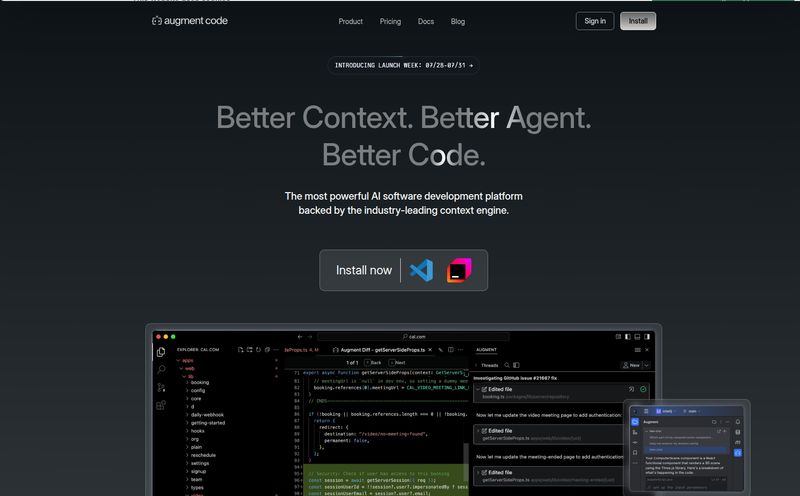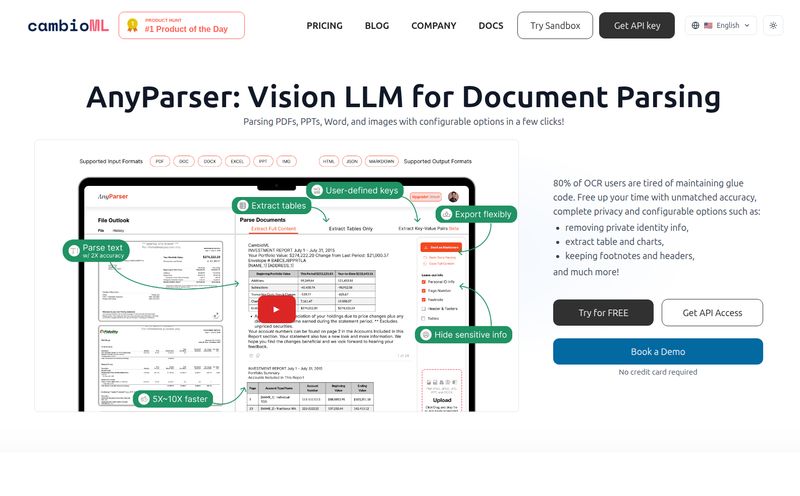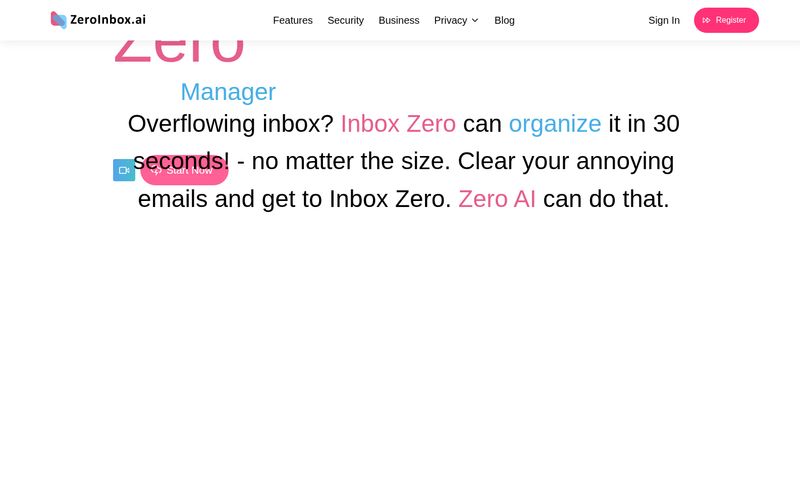As engineering leads, managers, or CTOs, we’ve all been in that stuffy meeting room, staring at a chart that’s supposed to represent 'productivity'. And what’s on that chart? Usually, it's something… well, kinda dumb. Lines of code (LOC). Number of commits. Pull requests opened. These are metrics that feel solid, countable, like we're actually measuring something real.
But in our gut, we know it's a lie. A comforting, quantifiable lie.
I’ve seen developers who could solve a catastrophic bug with a single, elegant line of code. I’ve also seen devs who would churn out 500 lines of boilerplate to accomplish the same thing, introducing a ton of tech debt in the process. Who’s the better engineer? The LOC metric would tell you it's the second one. And that’s just fundamentally broken. It’s like judging a novelist by how many pages they write, not the story they tell.
So when I stumbled across a new tool called Maxium AI, my interest was piqued. It claims to move beyond these vanity metrics. Of course, when I went to grab some slick screenshots for this article, their server gave me a big fat 403 Forbidden. A little ironic for a tool all about seamless delivery, but hey, maybe they're just too busy shipping code to fix a permissions issue. We've all been there.
What is Maxium AI, Really?
Okay, so what’s the big idea here? Maxium AI proposes a different way to look at engineering work. Instead of just counting things, it tries to measure engineering effort. That’s a fuzzy concept, right? But their approach is interesting. They hook directly into your GitHub and analyze the entire lifecycle of a pull request (PR). They look at the end-to-end development journey—from the first commit to the final merge—to gauge the complexity and work involved.
Think of it this way: building a simple bug fix is like building a LEGO car from a kit. Building a new, complex feature from scratch with multiple dependencies is like building a custom LEGO Millennium Falcon with no instructions. Both result in a finished product, but the effort is wildly different. Maxium AI is trying to be the tool that can tell the difference between the car and the spaceship, without just counting the bricks.

Visit Maxium AI
This all rolls up into a metric they call developer shipping velocity. It's a more holistic view of how effectively and efficiently your team is moving, from idea to deployment. It's not just about speed, but about the momentum of meaningful work.
The Old Gods of Engineering Metrics are Dead
For years, we've been held captive by these outdated metrics. It's a classic case of what’s known as Goodhart's Law, which basically says: "When a measure becomes a target, it ceases to be a good measure." The moment you tell your team, "We need to increase the number of commits," you'll get a flood of tiny, meaningless commits. It's human nature to game the system.
I once worked at a company where management got obsessed with 'PR turnaround time'. The goal was to get PRs reviewed and merged within 24 hours. Sounds great, right? Wrong. What happened was that proper, thoughtful code reviews went out the window. People would just skim and hit 'Approve' to keep their stats looking good. Quality plummeted, but boy did those charts look amazing for a quarter. It was a perfect example of optimizing for the wrong thing.
How Maxium AI Attempts a Different Path
Maxium AI seems to be built by people who have felt this pain. It’s not just about raw data; it's about context. Here are a few things that stood out to me from their feature set.
The Seamless Github Integration
First off, it all starts with GitHub. For most of us, that's where the work happens anyway, so the integration is a natural fit. It pulls data from PRs, commits, comments, and the whole development workflow to build its picture of 'effort'. This is table stakes for a tool like this, but they seem to have done it well.
The Engineer Performance Index
This one is both intriguing and a little scary. Maxium AI provides an index that lets you compare your team's performance with industry peers. On one hand, who doesn't want to know how they stack up? It could be a powerful tool for understanding if your processes are truly world-class or if there's room to improve. On the other hand, this needs to be handled with extreme care. It can't become a stick to beat your team with.
A Dashboard That's Actually Useful
They offer a custom-built dashboard that visualizes shipping velocity and identifies bottlenecks. This, to me, is the real gold. Being able to see that, for instance, PRs from the mobile team consistently get stuck in QA for three days longer than web team PRs is an actionable insight. It’s not about blaming the QA team; it’s about asking why. Is QA understaffed? Are the mobile testing requirements unclear? This is how you improve your resource planning and overall process.
My Honest Take on The Good and The Bad
No tool is perfect, especially one that’s still in beta. I’ve always felt that the most valuable thing isn't a flawless product, but one with a clear, promising direction. And Maxium AI has that.
The biggest plus is its very premise: providing a standardized way to evaluate effort across different tech stacks. It's notoriously difficult to compare the work of a data scientist writing complex Python algorithms with a front-end developer building a slick UI in TypeScript. If Maxium can truly normalize that 'effort' score, it would be a game-changer for fair performance evaluations and resource allocation. Finding bottlenecks before they become five-alarm fires is another massive advantage. It shifts the conversation from "Who is slow?" to "What is slowing us down?" which is a much healthier place to be.
Now for the caveats. The fact that it's in beta means you should expect some rough edges, and you might have to join a waitlist to even get access. Patience is a virtue, I suppose. The biggest limitation is that it's GitHub-only for now. If your team is on GitLab, Bitbucket, or something else, you’re out of luck. This isn't a flaw in the tool itself, just a boundary on who can use it today.
Let's Talk About Pricing... or the Lack Thereof
So, how much does this magical insight machine cost? Well, that's the million-dollar question. As of writing this, Maxium AI hasn't made its pricing public. This is pretty common for a product in a beta or waitlist phase. They're likely still figuring out their value proposition and what the market will bear.
If I were a betting man, I'd guess we'll see a SaaS model, probably priced per developer seat per month. There could be tiers based on team size or feature access (like that juicy industry benchmark data). For now, your best bet is to get on their waitlist and see what they announce. It might even be free for early adopters, who knows?
Who Is This Tool Really For?
Let's be clear, this probably isn't for the solo freelancer or the three-person startup hacking away in a garage. The real value comes from understanding team dynamics and process flows at scale. I see this being most beneficial for:
- Engineering Managers trying to get a fair and accurate sense of their team's output.
- VPs of Engineering and CTOs who need a high-level view of the entire department's health and want to do strategic resource planning.
- Tech Leads who want to identify and eliminate friction within their own team's workflow.
A word of caution, though. A tool like this is a double-edged sword. Used correctly, it’s a scalpel for process improvement. Used poorly, it becomes a Big Brother surveillance system that breeds resentment and fear. The success of Maxium AI in any organization will depend 100% on the culture and the intention of the person implementing it. It’s a tool for asking better questions, not for getting easy answers.
Frequently Asked Questions About Maxium AI
I've seen a few questions pop up, so let's tackle them head-on.
How does Maxium AI measure "effort" without using LOC?
It analyzes a wide range of signals from a pull request's entire lifecycle. This could include things like the scope of file changes, the complexity of the code logic (without just counting lines), the number of review cycles, comment frequency, and time spent in various stages. It aggregates these signals into a single, normalized 'effort' score.
Is Maxium AI just another developer surveillance tool?
It could be, if used that way. However, its stated goal is to identify process bottlenecks and improve team velocity, not to micromanage individuals. The most effective use is to look at team-level and cross-team trends to improve the system, not to rank individual developers.
What platforms does Maxium AI integrate with?
Currently, Maxium AI integrates exclusively with GitHub. There's no public information yet about support for other platforms like GitLab or Bitbucket, but it's a likely area for future expansion if the tool gains traction.
Is Maxium AI free since it's in beta?
Pricing is not public. While some beta programs are free for early users in exchange for feedback, there's no guarantee. You'll need to check their official website or contact them directly for the most current information.
How does the performance index work?
The performance index likely uses anonymized, aggregated data from all the companies on its platform to create a benchmark. It then compares your team's shipping velocity and effort metrics against this industry average, giving you a percentile-based ranking or comparison.
The Final Word on Maxium AI
Look, the quest for the perfect engineering metric is a long and storied one, filled with many failed attempts. I'm not ready to call Maxium AI the holy grail just yet. It's too new, too unproven. But I am genuinely excited about the direction it's heading. It’s asking the right questions and focusing on what truly matters: the holistic effort and flow of work, not just the easily countable artifacts.
If you're tired of the LOC and commit-count charade, it's definitely a tool worth keeping on your radar. It represents a more mature, more nuanced approach to understanding the complex, creative work that our engineering teams do every single day. And that's a step in the right direction.
Reference and Sources
- Maxium AI Official Website: https://maxium.ai
- Background on Goodhart's Law: https://en.wikipedia.org/wiki/Goodhart%27s_law



